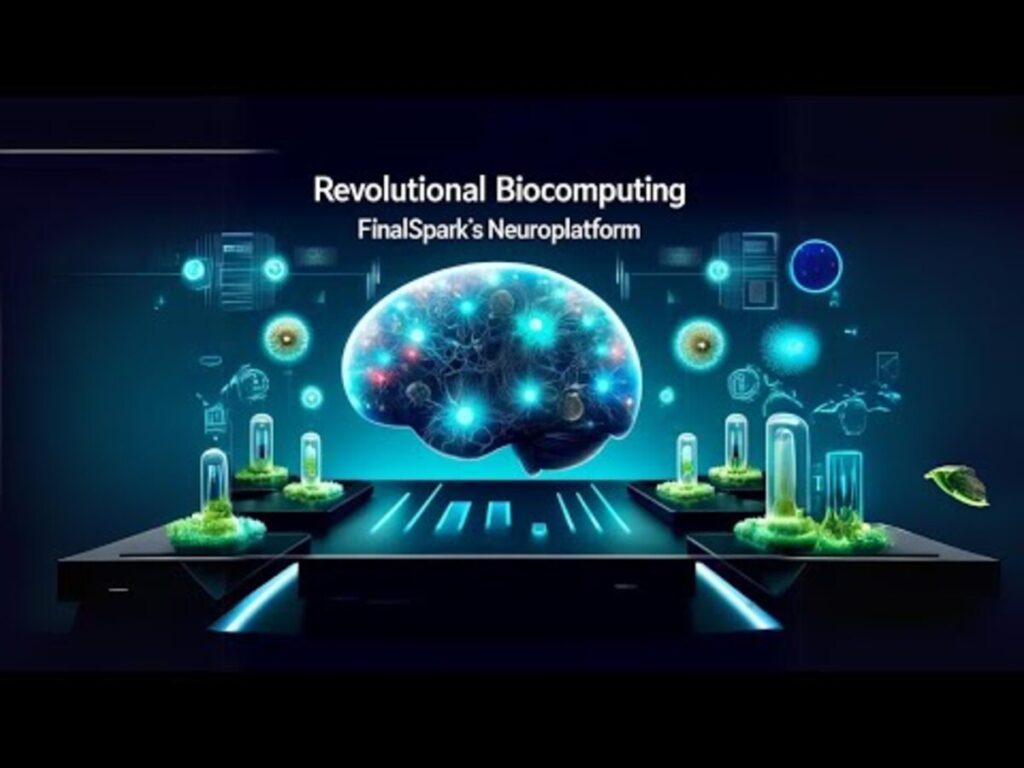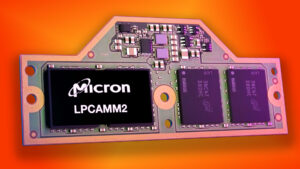Introduction
FinalSpark, a Swiss biocomputing startup, has unveiled Neuroplatform, a groundbreaking project that aims to develop the world’s first living processors, also known as bioprocessors. This pioneering approach, blending wetware computing and organoid intelligence, marks a significant advancement in the field of biocomputing.
Remote Research Platform for Brain Organoids: This online platform allows scientists around the world to remotely conduct experiments on human brain organoids grown in lab settings.
Goal: Living Processors: FinalSpark’s ultimate goal is to develop the world’s first living processor using these brain organoids. These biological processors could potentially learn and process information while using much less energy than traditional computer chips.
Potential Benefits: If successful, this technology could revolutionize computing by offering a more sustainable and efficient way to process information.

Follow us on Linkedin for everything around Semiconductors & AI
Transformative Potential of Neuroplatform
Neuroplatform introduces an innovative online, remote platform for researchers to conduct experiments on biological neurons.
This initiative utilizes 16 human brain organoids to pave the way for the development of living processors.
These bioprocessors, akin to traditional processors, have the ability to learn and process information while consuming significantly less power—approximately a million times less than conventional counterparts.
FinalSpark’s Neuroplatform is at the forefront of biocomputing research, offering a glimpse into a future with living processors.
Read More: 8 Reasons Why Neuromorphic Computing Demands a Revolution in Chip Design
Components of Neuroplatform: Living Processors
Brain Organoids: These are 3D clusters of cultured neurons, essentially miniature brains grown in a lab dish. FinalSpark’s organoids contain around 10,000 neurons and are roughly half a millimeter thick.
Electrode Integration: Each organoid is implanted with electrodes that allow scientists to stimulate and record neural activity. This enables communication with the organoid and facilitates its learning process.
Networking Capabilities: The platform allows connection of up to four organoids, forming a network that can collectively learn and perform tasks. This distributed processing mimics how the human brain functions.
Remote Access: Researchers can access and interact with the organoids remotely through the Neuroplatform, offering flexibility and wider participation in experiments.
Software Suite: The platform provides a suite of tools for researchers, including:
- Real-time monitoring of neural activity
- Programming interface for sending instructions to the organoids (using Python)
- Digital notebook for documenting research and findings
- Secure data storage and backup
Exploring Wetware Computing with Living Processors
The research undertaken by FinalSpark falls under the category of wetware computing, a domain that combines hardware, software, and biology. Wetware computing leverages the biological components found in living organisms to perform computations. Organoid intelligence, a related field, focuses on biological computing using 3D cultures of human brain cells.
Neuroplatform’s Hardware Architecture
FinalSpark’s Neuroplatform relies on sophisticated hardware to maintain homeostasis, monitor environmental parameters, and conduct electrophysiological experiments. Users can interact with the platform via a graphical user interface (GUI) or Python scripts. The hardware setup includes four multi-electrode arrays (MEA) to capture real-time measurements of cellular activity. Additionally, a closed-loop microfluidics system sustains the life of organoids on the MEA, while cameras capture images and videos for analysis.
Similarities with Traditional Processors
While FinalSpark’s Neuroplatform operates on biological principles, it shares similarities with traditional digital processors. Both systems utilize electrodes or transistors to handle the transmission of electrical signals. Moreover, they employ measurement and data processing capabilities to gather and process real-time information. The microfluidics system in Neuroplatform bears resemblance to cooling systems in conventional processors, ensuring optimal operating conditions.
Advantages of Living Processors
One of the key advantages of bioprocessors, as highlighted by FinalSpark, is their potential for sustainability and reduced power consumption. Unlike conventional digital processors, which consume significant energy, bioprocessors mimic the energy-efficient operation of the human brain. This suggests that bioprocessors could serve as sustainable alternatives to artificial neural networks (ANNs) in the future.
Read More: 3 Reasons Why Quantum Computing Will Challenge VLSI Design
Potential Advantages of Bioprocessors:
Efficiency: The human brain is incredibly efficient, consuming only 20 watts of power despite its immense processing power. Bioprocessors aim to replicate this efficiency, significantly reducing energy consumption compared to traditional chips.
Scalability: Growing and expanding brain organoid networks is envisioned to be simpler than miniaturizing silicon-based processors. This offers exciting possibilities for future large-scale biocomputers.
Learning and Adaptation: Unlike traditional chips, bioprocessors based on brain organoids have the potential to continuously learn and adapt, offering a more dynamic computing experience.
Living Processors: Accessibility and Future Outlook
Access to Neuroplatform is currently free for research purposes, enabling participants to conduct real-time experiments on biological networks. However, the scalability of the platform remains a consideration, with FinalSpark aiming to accommodate more users in the future.
Read More: 8 Reasons Why Neuromorphic Computing Demands a Revolution in Chip Design
Impact on AI and Computing
The development of living processors could revolutionize various industries, including AI and computing. These bioprocessors have the potential to outperform traditional processors in terms of energy efficiency and computational power. Moreover, they could pave the way for new applications in fields such as healthcare, where real-time processing of biological data is critical.
In summary, FinalSpark’s Neuroplatform represents a significant leap forward in the realm of biocomputing. By harnessing the power of living neurons, this innovative project has the potential to revolutionize computing as we know it. Stay tuned for further developments in this exciting field of research








